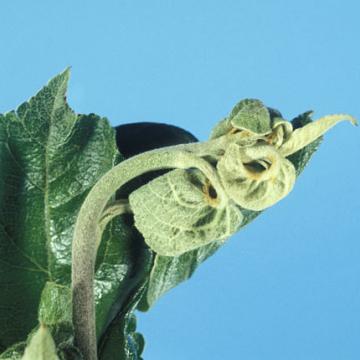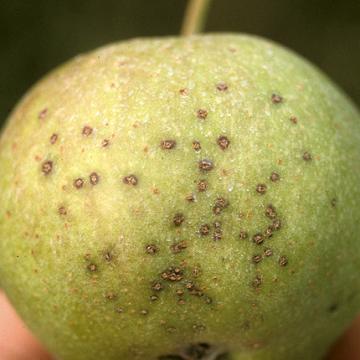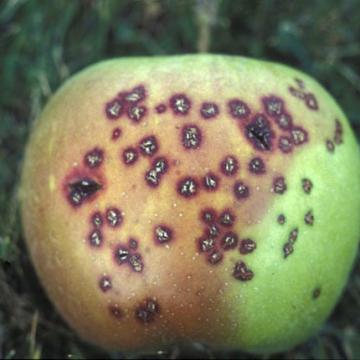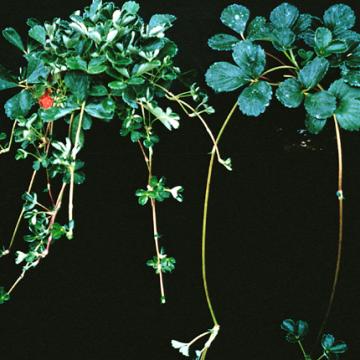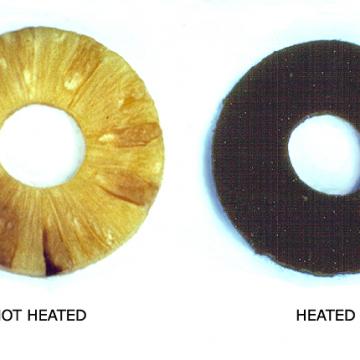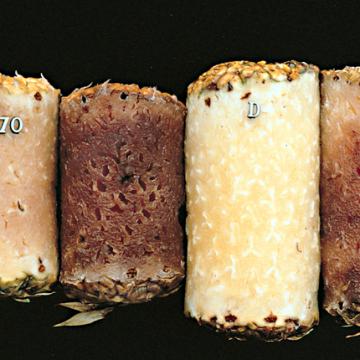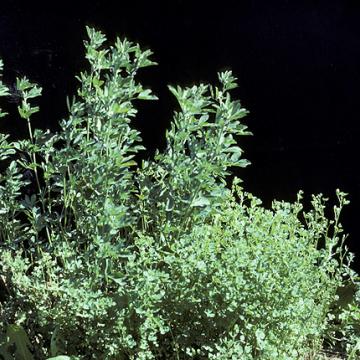DISEASE: Blister spot
HOST: Apple
Fruit with water-soaked spots.
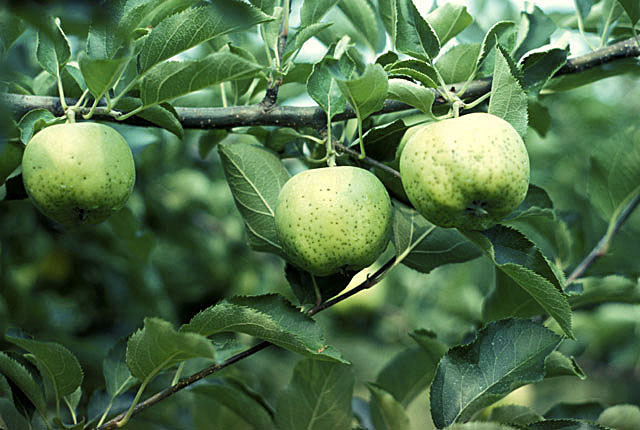
Blister spot | Apple
DISEASE: Blister spot
HOST: Apple (Malus domestica)
PATHOGEN: Pseudomonas syringae pv. papulans
SOURCE: T. Burr
DISEASE: Blister spot
HOST: Apple
Water-soaked blister spots on leaves of blighted twig.

Blister spot | Apple
DISEASE: Blister spot
HOST: Apple (Malus domestica)
PATHOGEN: Pseudomonas syringae pv. papulans
SOURCE: T. Burr
DISEASE: Blister spot
HOST: Apple
Apple with brownish blister spots.
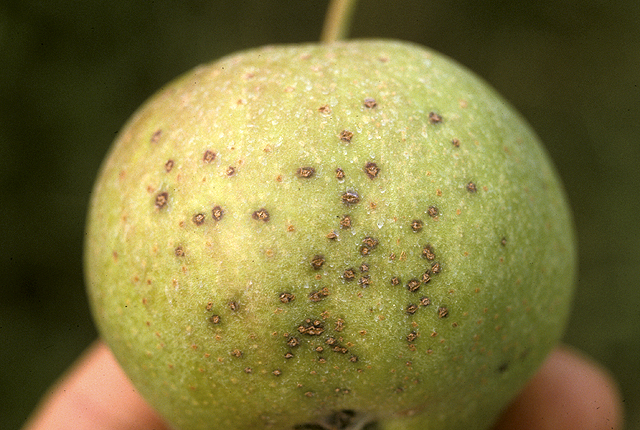
Blister spot | Apple
DISEASE: Blister spot
HOST: Apple (Malus domestica 'Mutsu')
PATHOGEN: Pseudomonas syringae pv. papulans
SOURCE: S. Thomson
DISEASE: Blister spot
HOST: Apple
Late stage of blister spot. The purplish black lesions are associated with lenticels and stomata.
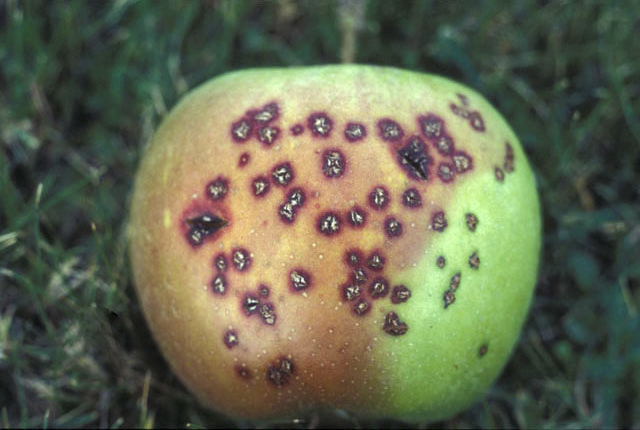
Blister spot | Apple
DISEASE: Blister spot
HOST: Apple (Malus domestica 'Crispin')
PATHOGEN: Pseudomonas syringae pv. papulans
SOURCE: T. Burr
DISEASE: Multiplier disease
HOST: Strawberry
Multiplier disease causes production of numerous crowns along runners.

Multiplier disease | Strawberry
DISEASE: Multiplier disease
HOST: Strawberry (Fragaria × ananassa)
PATHOGEN: 'Candidatus Phytoplasma trifolii'
PATHOGEN SYNONYM: Phytoplasma Clover proliferation group
SOURCE: M. Clark
DISEASE: Pink disease
HOST: Pineapple
Infected pineapple slices; effect of heating (right) and not heating (left).
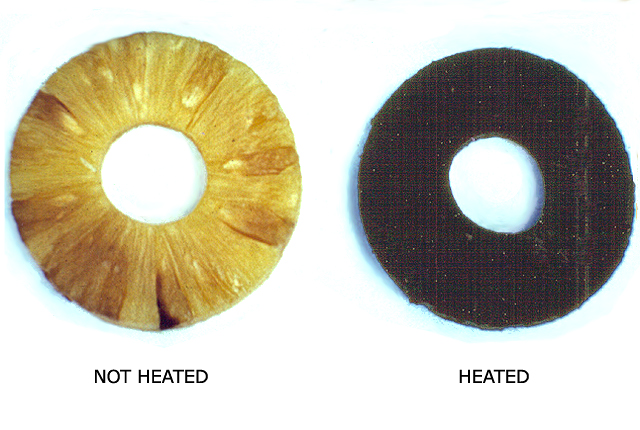
Pink disease | Pineapple
DISEASE: Pink disease
HOST: Pineapple (Ananas comosus)
PATHOGEN: Tatumella citrea
PATHOGEN SYNONYM: Pantoea citrea
SOURCE: K. Rohrbach, A. Alvarez
DISEASE: Pink disease
HOST: Pineapple
Two clones (A and D) showing different stages of infection. Second and fourth fruits (left to right) have been heated. Disease originally attributed to Gluconobacter oxydans and Enterobacter agglomerans and later to Pantoea citrea.
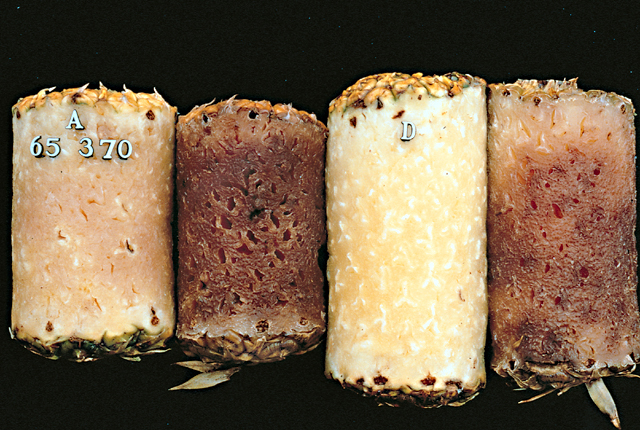
Pink disease | Pineapple
DISEASE: Pink disease
HOST: Pineapple (Ananas comosus)
PATHOGEN: Tatumella citrea
PATHOGEN SYNONYM: Pantoea citrea
SOURCE: K. Rohrbach
DISEASE: Witches'-broom
HOST: Alfalfa
Alfalfa plant (center) exhibiting stunting and proliferation of stems. Other symptoms are small, rounded, chlorotic, often puckered leaves and a yellowish cast.
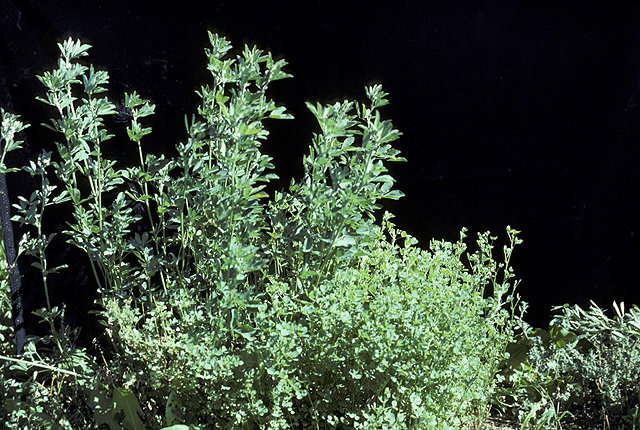
Witches'-broom | Alfalfa
DISEASE: Witches'-broom
HOST: Alfalfa (Medicago sativa)
PATHOGEN: 'Candidatus Phytoplasma trifolii'
PATHOGEN SYNONYM: Phytoplasma Clover proliferation group
SOURCE: S. Thomson
DISEASE: Witches'-broom
HOST: Alfalfa
Young plant (left) with small, numerous stems (witches'-broom). Healthy stems (right).
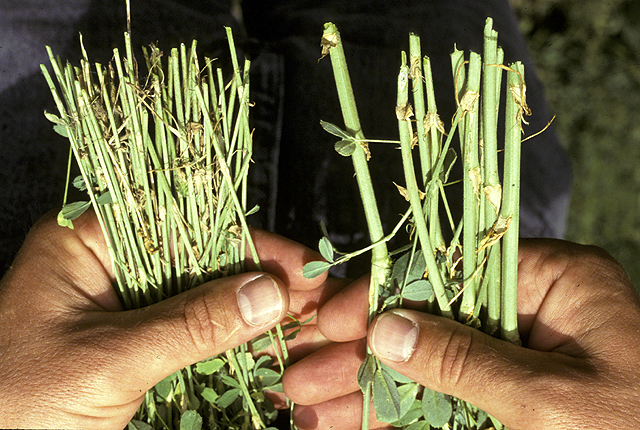
Witches'-broom | Alfalfa
DISEASE: Witches'-broom
HOST: Alfalfa (Medicago sativa)
PATHOGEN: 'Candidatus Phytoplasma trifolii'
PATHOGEN SYNONYM: Phytoplasma Clover proliferation group
SOURCE: S. Thomson



